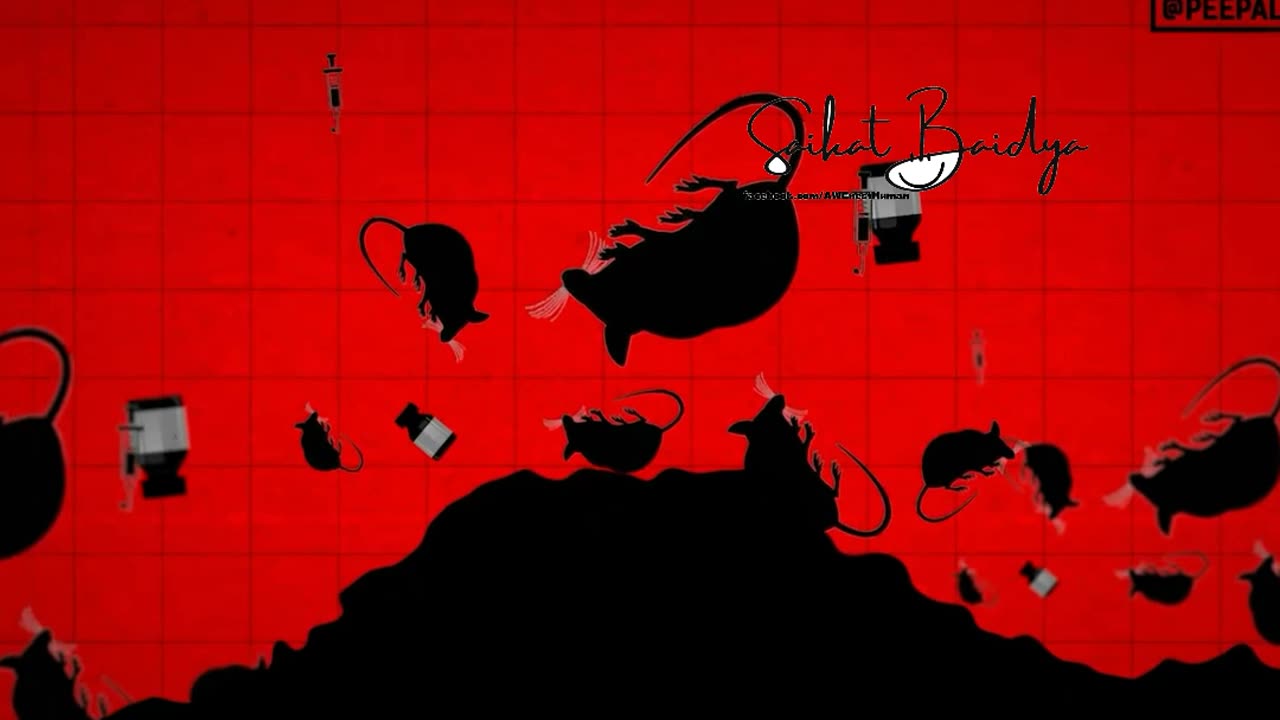Premium Only Content

Stop this cruelty
Title: Animal Killing by the Cosmetic Industry for Research and Development: A Comprehensive Analysis
Abstract:
This report aims to provide an in-depth analysis of the practice of animal killing by the cosmetic industry for research and development purposes. It examines the ethical, scientific, and regulatory aspects surrounding this practice, highlighting the controversies and alternatives that exist within the industry. The report also discusses the efforts being made to transition towards cruelty-free testing methods and provides recommendations for a more ethical and sustainable approach to cosmetic research and development.
1. Introduction:
The cosmetic industry plays a significant role in enhancing human aesthetics and personal care. However, many cosmetic products undergo testing procedures, some of which involve the use of animals. This report investigates the extent of animal killing for cosmetic research and development and evaluates the ethical concerns associated with such practices.
2. Ethical Considerations:
Animal testing in the cosmetic industry has faced widespread criticism due to its ethical implications. The unnecessary harm and suffering inflicted upon animals raise questions about the moral justifications for such practices. Alternatives to animal testing, such as in vitro testing, organ-on-a-chip technology, and computer modeling, have emerged as viable options that spare animals from harm.
3. Scientific Validity:
The scientific validity of using animals as models for human responses has been debated. Differences in anatomy, physiology, and genetic makeup between animals and humans can limit the applicability of results. Advancements in technology offer more accurate and relevant alternatives that can better predict human reactions to cosmetic products.
4. Regulatory Landscape:
Regulatory agencies in various countries have imposed restrictions and bans on animal testing for cosmetics. The European Union, for instance, has enforced a comprehensive ban on cosmetic animal testing since 2013. However, regulations vary globally, leading to disparities in the treatment of animals in cosmetic research.
5. Industry Initiatives and Progress:
Many cosmetic companies are increasingly adopting cruelty-free testing methods and investing in innovative technologies. Collaboration between industry stakeholders, researchers, and regulatory bodies has led to the development of alternative testing methods that prioritize animal welfare while ensuring product safety.
6. Challenges and Roadblocks:
Transitioning away from animal testing poses challenges, including the need for validation of alternative methods, the establishment of standardized protocols, and the acceptance of these methods by regulatory authorities. Additionally, economic considerations and the complexity of cosmetic formulations can impede swift progress.
7. Recommendations:
To address the ethical concerns and challenges associated with animal killing for cosmetic research and development, the industry should:
a. Invest in research to further develop and validate alternative testing methods.
b. Collaborate with regulatory bodies to establish standardized protocols for cruelty-free testing.
c. Raise awareness among consumers about cruelty-free products and the importance of supporting ethical practices.
d. Allocate resources towards education and training for scientists and researchers to promote the adoption of alternative methods.
8. Conclusion:
The cosmetic industry's use of animals for research and development purposes raises significant ethical concerns. While progress has been made in adopting alternative testing methods, there is a need for continued collaboration and innovation to fully transition away from animal testing. By prioritizing ethical considerations, scientific advancements, and regulatory cooperation, the cosmetic industry can move towards a more compassionate and sustainable approach to product development.
Disclaimer: The information presented in this report is based on the knowledge available up to September 2021. It is advisable to refer to the most recent sources for updates on the current state of animal testing practices in the cosmetic industry.
-
 20:10
20:10
DeVory Darkins
16 hours ago $26.18 earnedThe View ERUPTS Over Call for Biden to Pardon His Son
81.8K108 -
 5:14:10
5:14:10
GamingChad
13 hours agoMS Flight Simulator 2024 - Lets Make this Turkey Fly -Career mode Pt.2
99.9K7 -
 5:00:01
5:00:01
Pepkilla
14 hours agoHappy Thanksgiving ~ Wumble StwEeeem
61.9K5 -
 7:24:25
7:24:25
Rotella Games
1 day agoThanksgiving Side Missions & Hangout | GTA San Andreas
73K7 -
 4:07:31
4:07:31
MafiaTwin
12 hours agoFrist Stream On Rumble
53.2K1 -
 19:41
19:41
Neil McCoy-Ward
16 hours agoFinally! Some Good News Today... (& Happy Thanksgiving!)
37.7K21 -
 7:22:11
7:22:11
tacetmort3m
17 hours ago🔴 LIVE - (HAPPY THANKSGIVING!) BACK WITH MORE STALKER ACTION - STALKER 2 - PART 7
30.3K -
 58:05
58:05
The Tom Renz Show
12 hours agoThanksgiving In America 2024 - With Mark Sherwood
24.9K8 -
 1:13:41
1:13:41
DDayCobra
15 hours ago $9.20 earnedHappy Thanksgiving!
50.7K5 -
 42:24
42:24
Professor Nez
15 hours ago🚨Kamala's Staff CONFESSES to FRAUD! Trump is Already MAKING AMERICA GREAT AGAIN! 🇺🇸
82.1K230